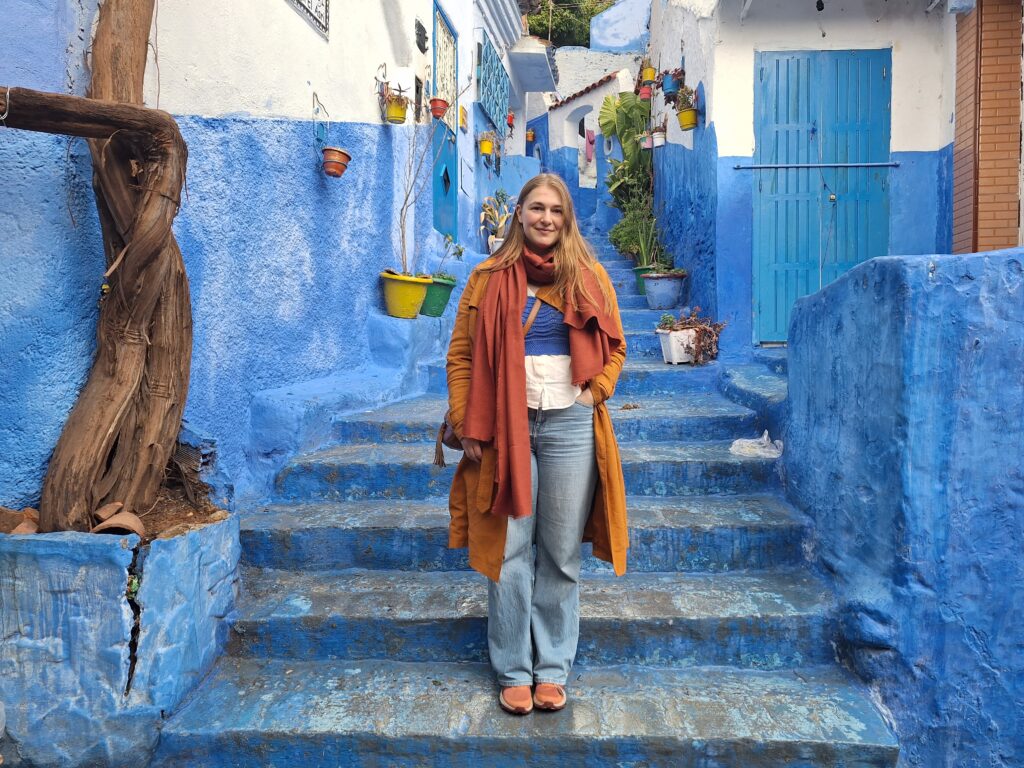
In March 2025, I went to Morocco during Ramadan with a friend. This is a holy month for Muslims all over the world where they practise a form of intermittent fasting: they can only eat when the sun is down. There is an increased attention to prayer and the individual’s relationship to Allah (God). This month gives space to muslims to lean into their spirituality and deepen their beliefs.
This is a travel log of how I experienced Morocco during Ramadan in 2025.
Day 1: Exploring the medina
We arrived at the airport around 15h in the afternoon on a Saturday. Getting a taxi was fairly easy and we managed to haggle down 150MAD to 100MAD (Moroccan Dirhams). We arrived at the border of the Medina and walked to our shabby hotel across Café Baba. A hole-in-the-wall café where many famous guests, including the Rolling Stones in the sixties, would frequent to smoke weed through the traditional pipes. Even though Tanger isn’t a super touristic city, due to its strategic location at the strait of Gibraltar it’s the gateway for people with vehicles to cross into Africa by ferry. Perhaps there is a correlation with this strategic geographical positioning, the ferries filled with Europeans, or perhaps because of Tanger’s history of being an international zone, but the first day we barely noticed anything out of the ordinary or Ramadan-related when it came to life, food and shopping. The medina had white and light blue plastered walls with orange-stained doors and shutters. It felt rather medieval for a city that has known so many different cultural influences including Berber, Spanish and French. The medina reminded me of the bazaars in Eastern Europe. We struck down at a fish restaurant called ‘Chez Hasan’ and had a fish tajine including swordfish. A must-try when you’re in Tanger! About one and a half hours before sunset, the Medina fills up with people hurrying to buy fish, vegetables and sweets for their Iftar. Once the sun sets, the streets go quiet and the shops close temporarily. We finished our night at Café Central for a Moroccan mint tea. One thing you won’t be able to find here (at least during the Ramadan): alcoholic drinks. When walking back to our hotel, the shops are open again. The people of Tanger are very relaxed and civil towards tourists. We rarely get stares and almost no-one tries to pressure us into entering their shops. Apart from its kind inhabitants, the city is also filled with street cats. They’re small, skinny and incredibly social. We often see locals giving food to them.
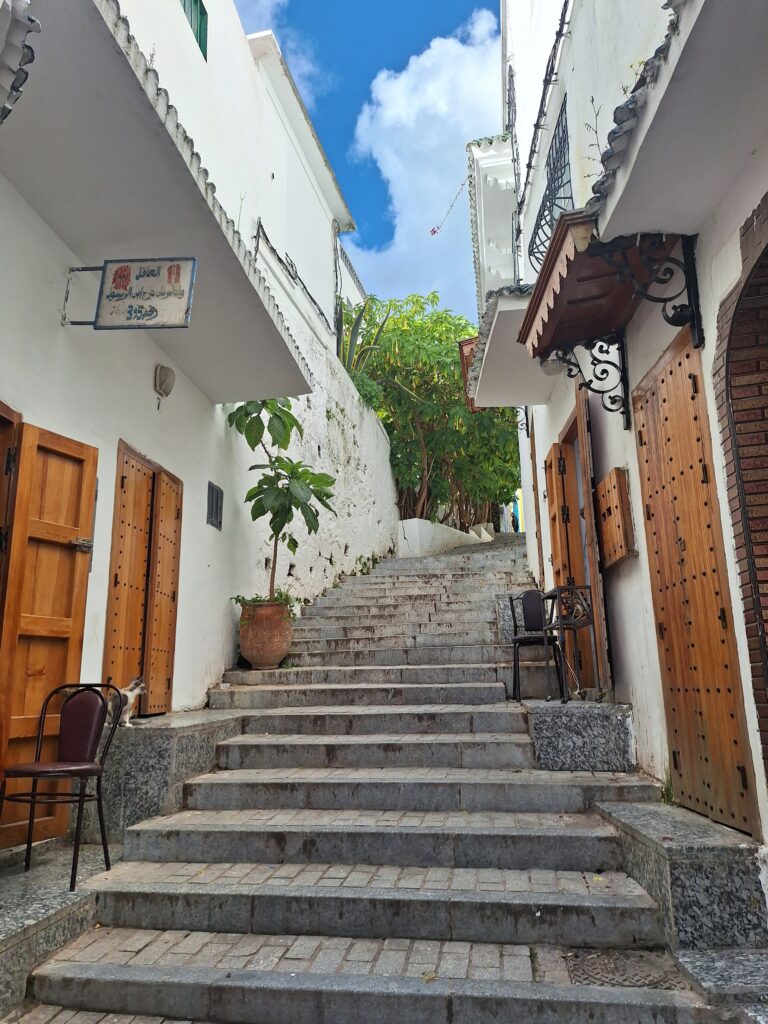
Day 2: Experiencing a different rythm
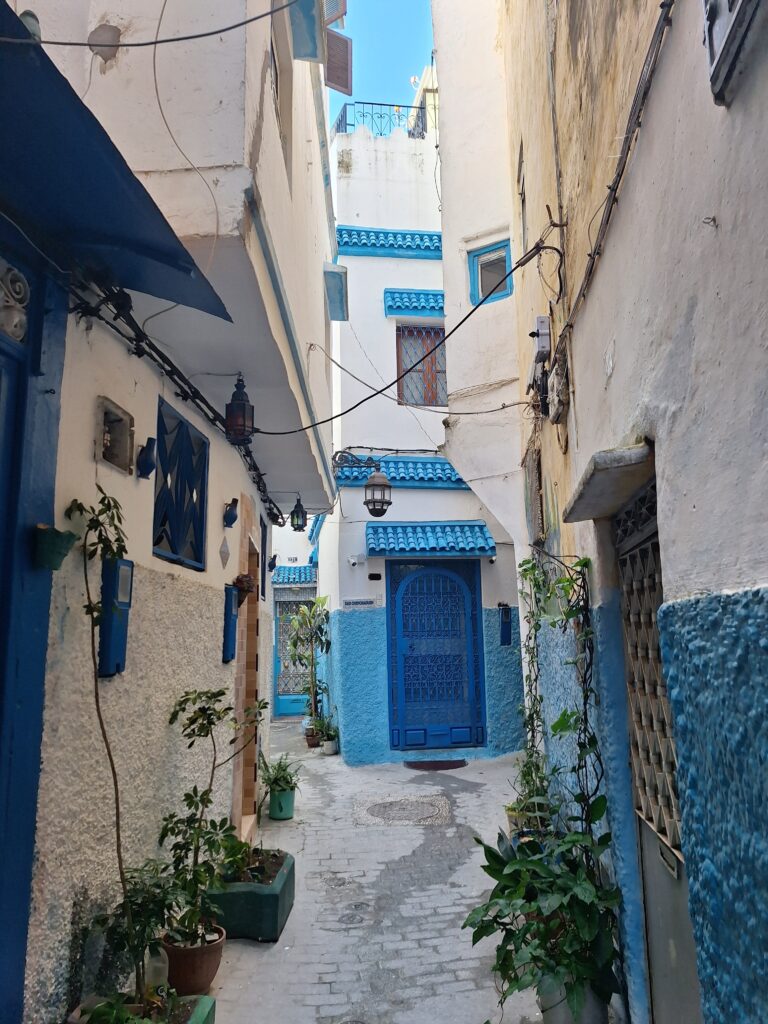
The second day, we started to notice differences in the cadence of life in Tanger during the Ramadan. When we tried to call our hotel owner, he was fast asleep at 11h in the morning. We were surprised by how late life starts, at 10h almost nothing had opened yet, even coffee bars and bakeries were closed. Ironic to us, considering they were open at 21h the night before. We found ourselves at the central square of the medina again, alongside all the other hungry tourists looking for breakfast. Later that day, our hotel owner took us for a visit to Cap Spartel (50 MAD – not worth it) and to do a camel ride (70 MAD – totally worth it). The camels reminded me of large dogs in their demeanor, never had I thought I’d find a camel cute! Our hotel owner negotiates for free camel milk that was milked right in front of our eyes. He gave me a sip – the milk was still warm, slightly nutty and umami. Definitely not as sweet as cow’s milk. I wondered about the ethics of camel riding, but the herd was all together and the young stayed with their mums, still got to suckle (albeit sharing with the camel milker) and the rides were fairly short. My conscience is in the clear for now. Back in the car, I asked the hotel owner how much the camel milk had cost him, given that before going to the camels he mentioned that their milk is expensive because of its rarity. He told me that the milk was free, because he brought the camel owner business (us). That it would have been a disgrace for the camel owner to ask him for payment, especially during Ramadan. This made me realise that Ramadan also means that they give eachother grace, like the taxi driver gave us the day before.
For foreigners, the most noticeable traditions are the Iftar and Suhur. The Iftar is the first meal to break their fast after sunset. In Northern Morocco, this was at 18h30. The Suhur is the last meal that they can eat before sunrise. This is usually around 5h00. The hotel owner stressed when 18h approached and we were still 30 minutes away from downtown after our camel adventure. He still needed to buy fish and make his Fish tajine for himself and his father. He was bummed out that he was going to miss Iftar. He told us that he breaks his fast with a date and milk, a typical tradition. According to him, the date is good for everything: weight loss, weight gain, sickness, health. I was skeptical but bit my tongue. After he dropped us off in the medina, we walked to one of the highest rated traditional restaurants of Tanger, Kebdani. But unfortunately for us, they’re closed for Iftar and would re-open after 19h. This is the second time that day that we were confronted with closed businesses due to the Ramadan. A little bummed out, we decided to head to another restaurant. Here we sit down and get some free olives to start with. The waiter informed us that the service is out for 20 minutes due to Iftar and afterwards they’d start serving again. That night, we learnt that if we want to eat dinner during Ramadan, we either have to do it before sunset (18h) or after Iftar (19h30).
Day 3: Chefchaouen, the blue pearl
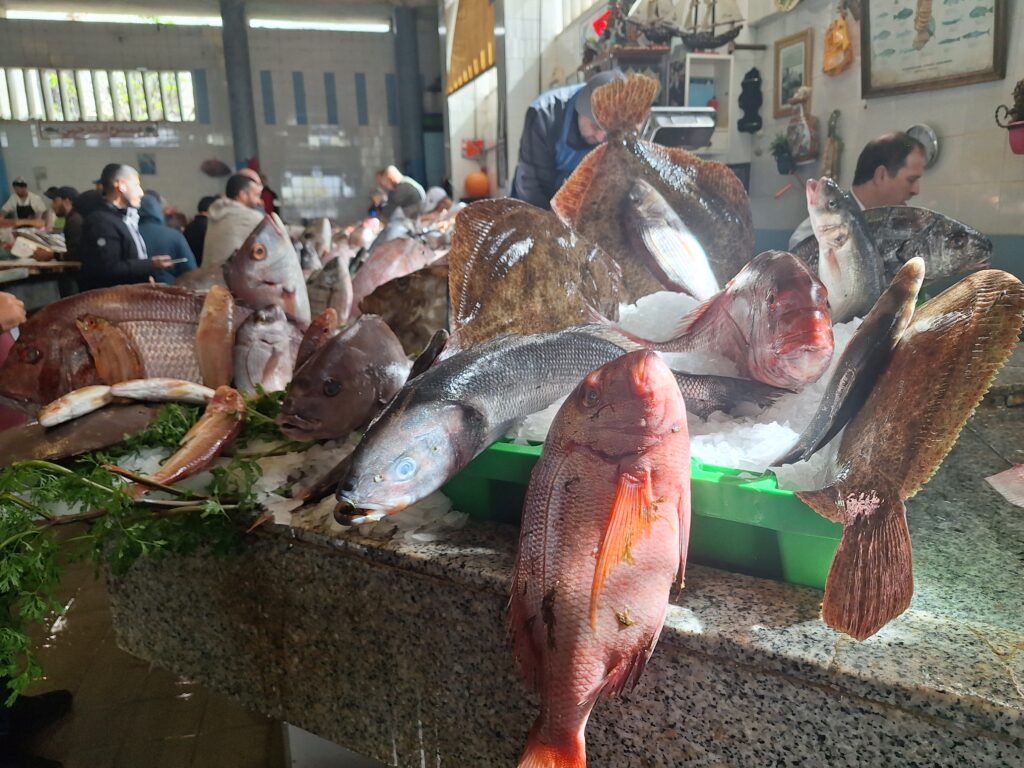
On the morning of the third day we took a field trip to a mall to see if it’s any different from malls in Europe. The mall opens at 10h so being the true Europeans we are, we arrive there at 10h sharp, only to find out that the stores and food court don’t actually open until around 11h. Annoyed by our bad luck strike, we go to the train station around the corner and eat a McDonald’s burger. At least McDonald’s is always open! We take a bus to Chefchaouen, a beautiful village in the Rif mountains famous for its blue medina and waterfalls. It’s often referred to as the blue pearl of Morocco. The mountains in the backdrop of the town are monumental, towering over the city and catching clouds with their impressive size. I would have loved to have spent some days on the mountain trails nearby.
Where Tanger was friendly and relaxed, Chefchaouen is very touristic and the salesmen were aggressive. We get many stares on the street and experience a lot of catcalling. We were warned of this beforehand but thought that with our baggy, covering clothing leaving only our hands and faces bare, it wouldn’t be that bad. The medina was beautiful but the atmosphere felt aggressive and unwelcoming. I wonder if they’re just sick of the tourists like Barcelona and Venice.
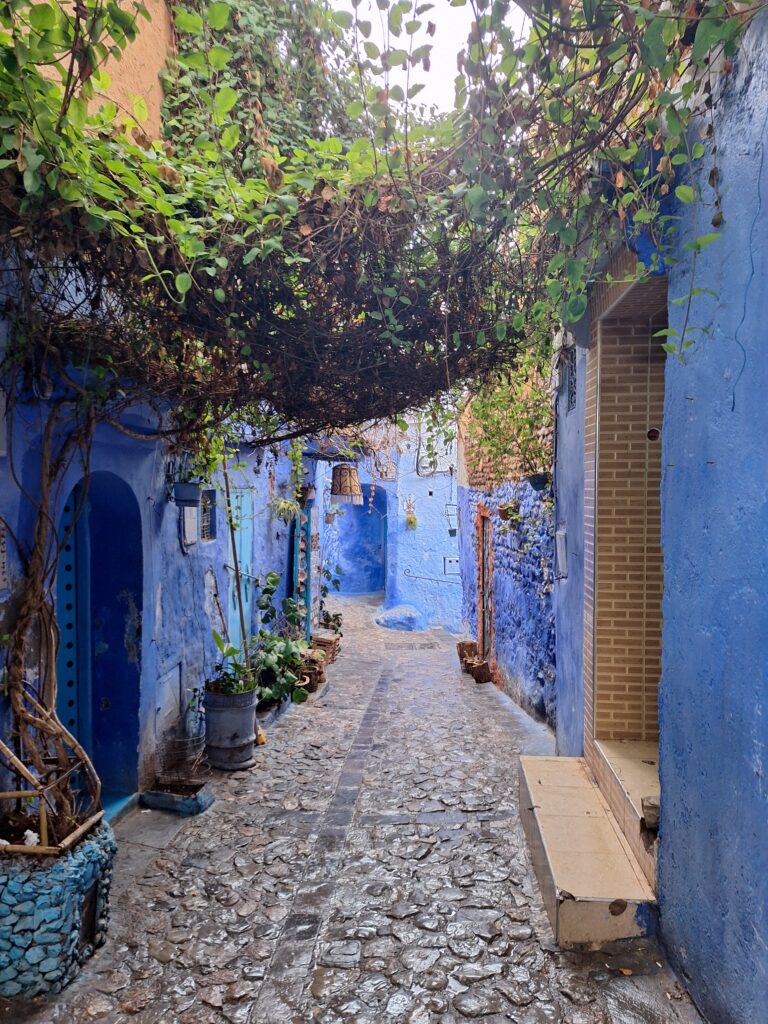
After walking the blue streets for a couple of hours and getting properly soaked by the rain, we went for dinner in a restaurant looking out over the valley with mountain ridges on the sides. We’re the only tourists and at a certain point (18h) the only people in the restaurant. The staff is preparing all other tables in a manner that looks like an Easter brunch: a glass of milk, a glass of orange juice, towers of small patisseries, hard boiled eggs and hot lentil soup. We ask what is happening and it turns out that they’re preparing for the Iftar. This is our chance to be little flies on the wall and see what it’s like! We ordered two large pots of Moroccan tea and fantasized about what could happen: would there be a countdown like at New Year’s? Or is there one person that gives the sign that everybody can eat? Would they pray at the table? The reality was a bit underwhelming. There was no communal moment and people started eating as soon as their table was complete. Some needed to wait longer for a family member running late, but all the people around a table started together. Where I thought they would devour their plates after not eating all day, everybody remained very civilized, eating small bites at a time. We were still surprised by the contents of the meal; we expected it to be more hearty and less breakfast-type of foods. But perhaps this was the specific theme of the evening. I tried asking the waiter but he was not very happy to explain. Perhaps he hadn’t had the chance to eat yet, as the service in this restaurant just continued while the sun went down.
Day 4: a choir of minarets carry the sound over the cities
On our last full day in Morocco, at 5 in the morning, I’m awakened by my first Suhur call. The days prior, the Imams would call out times of prayers through the speakers located at the top of the minarets of their mosques. But never had I heard the morning one before. We had a Moroccan breakfast in the hotel and were very happy not to have to search for something that’s open in daylight during Ramadan again. The rain and clouds continue, the mountainous climate is a noticeable difference to the mild and sunny weather we had the days before at the coast. We took the bus back to Tanger and watched the sun set at a rooftop bar looking out over the bright blue ocean, city and mountains. At 18h30, the Iftar calls started to blast through the minarets. The mosques start one at a time, some Imams call more monotone, others use more melody. It sounded like a choir. Because of our location, we heard the minarets from all over the city in a stereo sound. It was one of the most special moments from our trip. That evening at 19h we attempted to go back to the shopping centre. The store windows have mannequins featuring short skirts and strappy tops. We were surprised by the sight: even though we saw Moroccan women without a hijab on public buses, we never saw someone in clothes as revealing as in the mall. Our spell of bad luck continued: the stores are closed again! Officially they are open from 10h-22h, but due to Iftar they’re closed from 18h-21h, opening for one more hour at night before closing at 22h. We take a taxi to our accommodation for 150 MAD. The hotel is a 3 minute ride from the airport so we can easily catch our early morning flight the next day. Unfortunately our early morning ride didn’t extend his grace and even though it was only 3 minutes, he charged us 150 MAD stating it’s the official price (he was not an official taxi) and we knew we couldn’t haggle our way out of it this time.
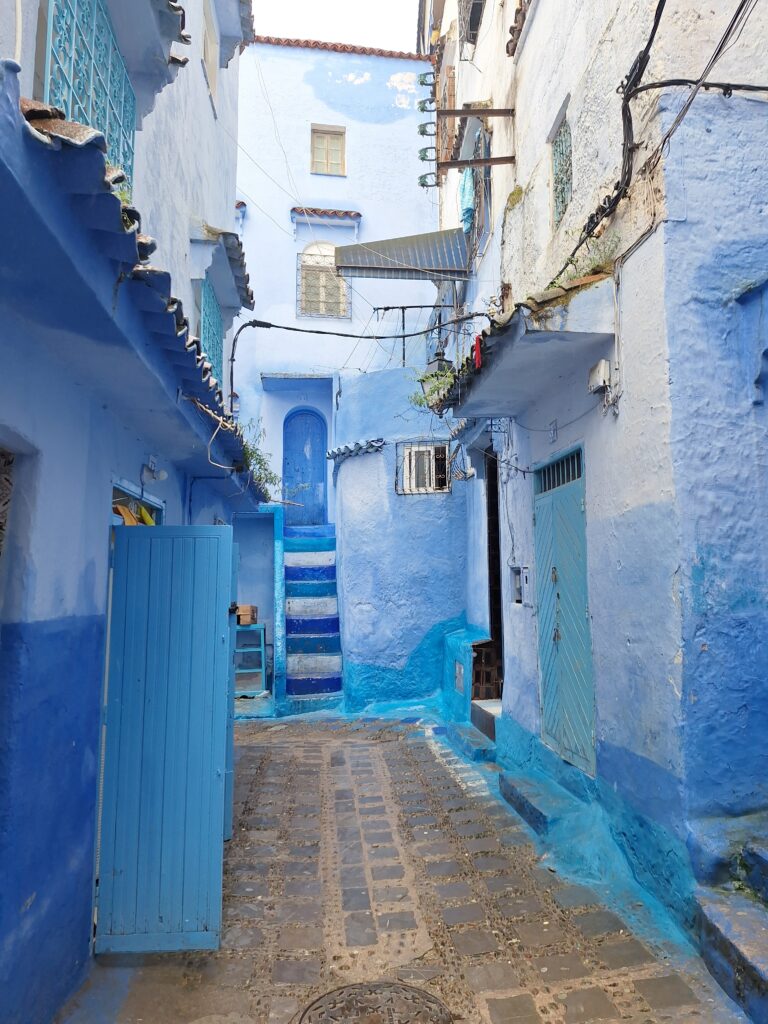
I would definitely recommend visiting Morocco, it is a beautiful country and the people are very kind. The food is incredible and the scenery amazing. I will return to it one day, but it isn’t a destination that you have to be young, wild and free for to visit. I’d probably come back here when I’m in my 40’s, when I have a family. I’d still love to visit Fez, Marrakech and the Saharan desert.
